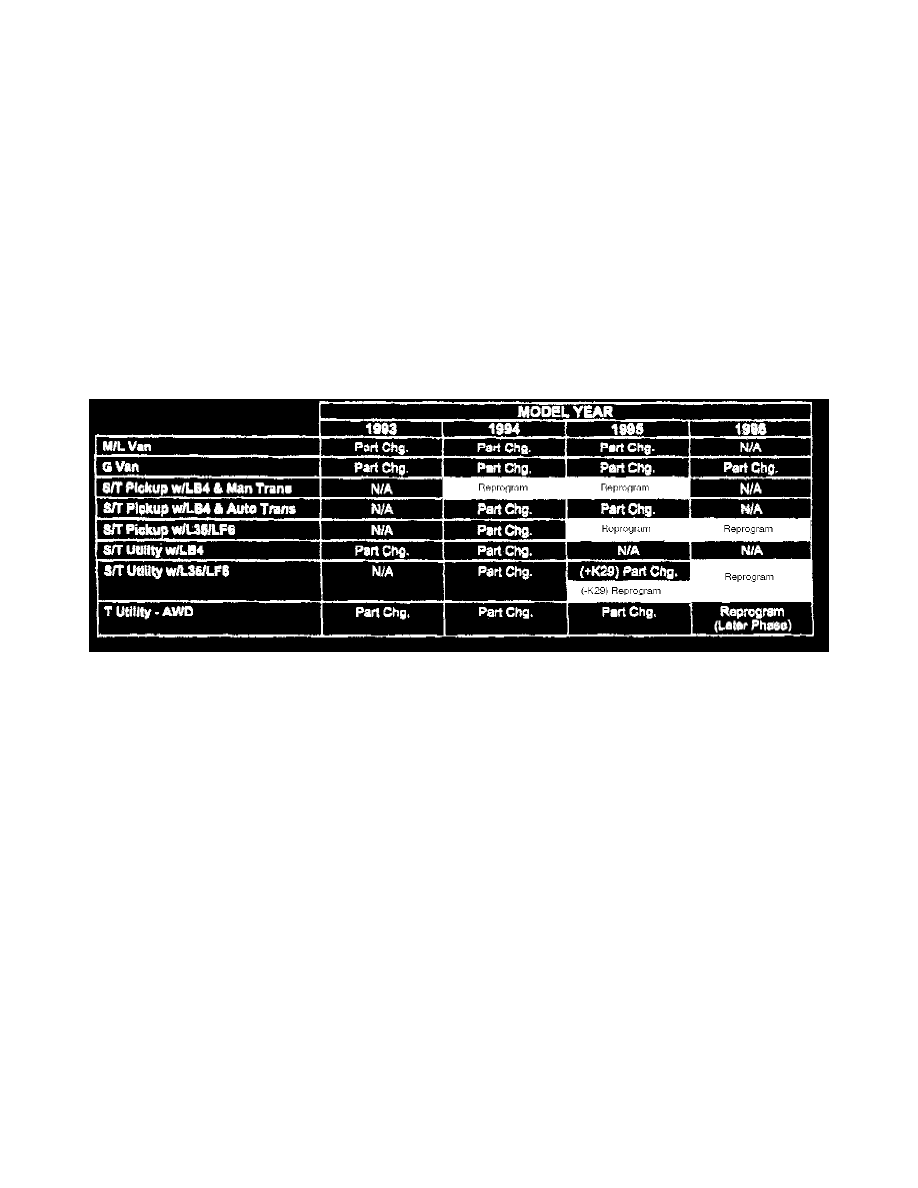G 30 Van V8-454 7.4L VIN N TBI (1995)

Technical Service Bulletin # 99046
Date: 991201
Recall - High/Low/High ABS Brake Anomaly
File in Section: Special Prices
Bulletin No.: 99046
Date: December, 1999
SPECIAL POLICY
SUBJECT:
99046 - SPECIAL POLICY - HIGH/LOW/HIGH ABS BRAKE ANOMALY
MODELS:
1993-1996 CHEVROLET, GMC, AND OLDSMOBILE S/T UTILITY
1994-1996 CHEVROLET AND GMC S/T PICKUP EQUIPPED WITH A V6 ENGINE
1993-1995 CHEVROLET AND GMC M/L VAN
1993-1996 CHEVROLET AND GMC G VAN
THIS SPECIAL POLICY IS IN EFFECT UNTIL DECEMBER 1, 2002
DUE TO THE AVAILABILITY OF PARTS, THIS SPECIAL POLICY WILL BE ADMINISTERED IN PHASES. THIS FIRST PHASE WILL BE
THE REPROGRAMMING OF THE VCM IN 2WD AND 4WD 1994-1996 S/T PICKUPS AND 1995-1996 S/T UTILITIES EQUIPPED WITH A
VCM. VEHICLES INVOLVED IN PHASE 1 ARE SHADED IN THE TABLE.
YOU WILL BE NOTIFIED OF THE NEXT PHASE VIA DCS MESSAGE.
Condition
The federal government's highway safety agency, the National Highway Traffic Safety Administration (NHTSA) has identified, and General Motors
Corporation has confirmed, the existence of a condition in the antilock braking system of some Chevrolet, GMC, and Oldsmobile S/T utilities.
1994-1996 Chevrolet and GMC S/T pickups equipped with a V6 engine, 1993-1995 Chevrolet and GMC M/L vans, and 1993-1996 Chevrolet and GMC
G vans, all equipped with the Lucas Varity three-sensor ABS system. On rare occasions, this condition can result in longer stopping distances during
certain antilock brake applications, as explained below.
If the customer is driving on a road surface that supports good traction and they begin to stop by applying the brake pedal firmly, and both front wheels
of their vehicle then pass onto a slippery surface (such as an ice-covered or wet patched asphalt part of the road), the antilock brake system will adjust
the brakes at each of the wheels to take advantage of the available traction. This will allow the customer to steer and maintain stability, which is normal
ABS operation1 as their owner's manual explains in more detail.
However, if the customer is still braking while the vehicle leaves the slippery surface and both front wheels get back on a higher-traction surface, the
ABS may perform as if the vehicle were still on the slippery surface and the vehicle may not stop as quickly. However, this will not happen every time
these conditions are encountered. It depends on several additional factors, such as vehicle speed and the length of the slippery surface.
The ABS system was designed with increased sensitivity to wheel slip in order to improve vehicle steerability while braking on very slippery surfaces.
This improvement for steerability, however, made it possible for reduced front braking effectiveness to occur as described above.
SPECIAL POLICY ADJUSTMENT (Phase I)
